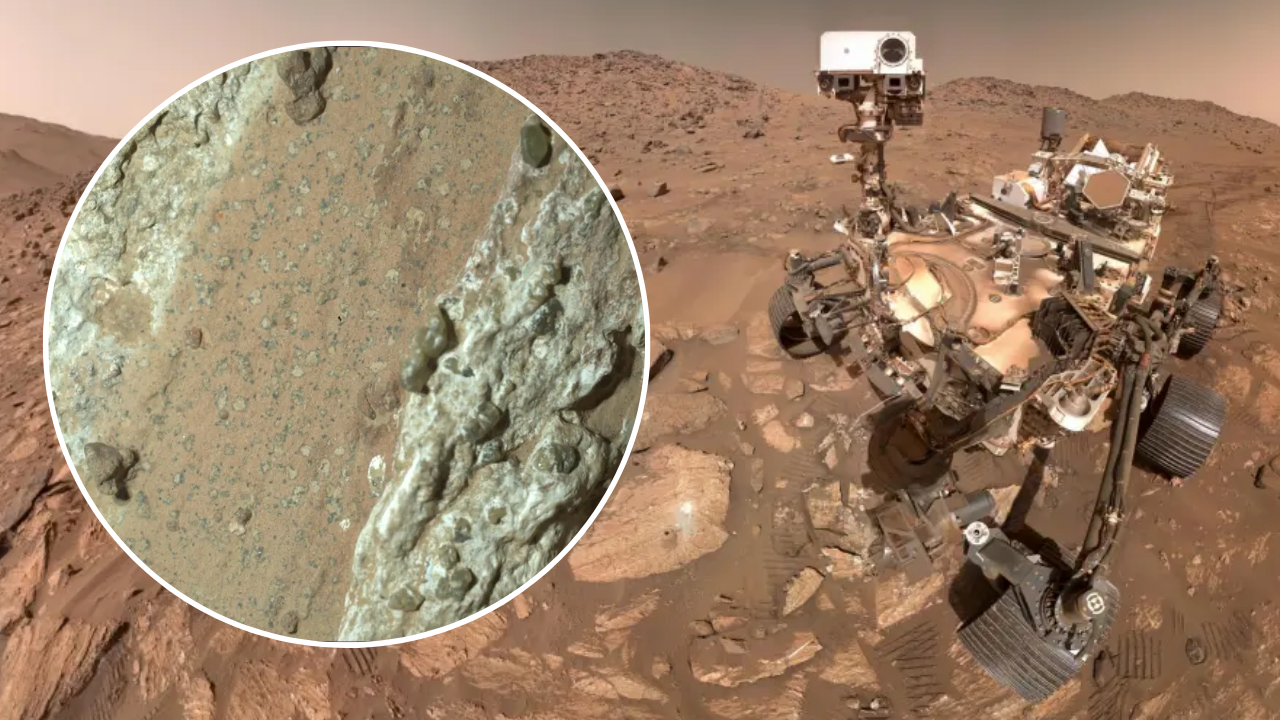Scientists Discover Rock on Mars Suggesting Ancient Life
NASA’s Perseverance rover has discovered a Martian rock in Jezero Crater containing potential biosignatures, offering the strongest evidence yet that ancient microbial life may have once existed on Mars.

NASA announced on September 11, 2025, that its Perseverance rover has identified compelling potential biosignatures in a rock sample collected from the Bright Angel formation within Mars’ Jezero Crater, marking a significant milestone in the search for ancient life on the Red Planet. The sample, dubbed “Sapphire Canyon” and extracted from a rock called “Cheyava Falls,” contains mineral and chemical patterns—specifically iron-phosphate and iron-sulfide minerals—that closely resemble those produced by microbial metabolisms on Earth.
The discovery, published in the journal Nature after a yearlong peer-review process, follows extensive analysis by an international team of scientists using Perseverance’s advanced instruments. The rover’s findings include organic carbon and unusual textures in the mudstones, which are considered possible biosignatures—features that could have been formed by biological activity, though non-biological processes cannot yet be ruled out. According to NASA officials, these redox reactions in the sedimentary rocks occurred at low temperatures, a setting where, on Earth, microbial life often drives such chemical changes.
Scientific Significance and Caution
While the evidence is the most persuasive yet for ancient Martian life, scientists emphasize caution. Professor Sanjeev Gupta of Imperial College London, a key contributor to the study, stated, “This is a very exciting discovery of a potential biosignature but it does not mean we have discovered life on Mars. We now need to analyse this rock sample on Earth to truly confirm if biological processes were involved or not.” NASA’s project scientist Katie Stack Morgan echoed this, noting that while abiotic explanations are less likely given the findings, they cannot be excluded without further study.
The Perseverance rover, which has been exploring Jezero Crater since 2021, was specifically tasked with collecting and storing rock and soil samples for eventual return to Earth. The Bright Angel formation, where the sample was found, is a relatively young sedimentary deposit, suggesting that habitable conditions on Mars may have persisted later in the planet’s history than previously thought.
Next Steps and Broader Implications
The rover’s onboard instruments have reached the limits of what can be determined remotely. NASA’s Mars Sample Return (MSR) mission, which aims to bring these samples back to Earth for detailed laboratory analysis, is now seen as critical for confirming whether the observed features are indeed the result of ancient Martian life. However, the timeline for MSR remains uncertain due to technical and budgetary challenges.
The discovery has sparked renewed debate in the scientific community about the criteria for confirming extraterrestrial life. While the presence of organic carbon and mineral biosignatures is compelling, researchers stress that extraordinary claims require extraordinary evidence. The findings also highlight the importance of international collaboration and the need for continued investment in planetary exploration.
If confirmed, the implications would be profound, reshaping our understanding of life’s potential beyond Earth and informing future missions to Mars and other planetary bodies. For now, the scientific community awaits the return of these precious samples, which may finally answer the age-old question: Was Mars ever home to life?